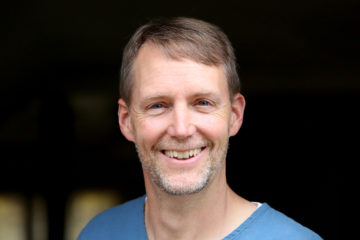There can be a follow-the-leader quality to yoga classes. Like going into an aerobics class and doing whatever the instructor says without giving it thought. I’ve done it. I’ve followed the instructions of yoga teachers and not connected to the deeper purpose.
Now, after several months of intensive study in the deeper aspects of what yoga is, and the how and why, I’m exploring. What is my practice? What is my teaching of yoga?
From the first few yoga classes I went to nearly 15 years ago in St. Louis — in which I felt a lukewarm affinity for yoga, at best — I favored the meditative qualities over the physical. I told the instructor that when she asked for my thoughts on class.
Nothing more was said, and I rarely engaged again with asana classes until last year. That’s when I learned there’s more, the more I’d been wanting all along.
Asana practice is not the entirety of yoga but has its purpose in yoga. It’s a way of creating drama on the mat through which we can practice the internal, the ability to face that drama and breathe through it. Jessica Patterson taught me that at Root Center for Yoga and Sacred Studies in Colorado Springs, and I dived in.
Through a flow of asanas (poses), we can simulate facing the ever-changing circumstances that seem to be a constant in life. In those sessions of intentional tension on the mat — ones we can relate to moments in the office, in relationships, in rush-hour commute — we can practice choosing our response: “I’m not good enough” or “I’ve got this.”
Meditation + Asana
Last month, I felt the searing burn in my muscles during a two-hour session at Hridaya Yoga while on vacation in Oaxaca, Mexico. It was a meditative class with an intense use of asana in brief periods. There was no flow, just sweat-soaked intensity with doses of meditation between.
Simple enough asanas, like forward fold, were held for seemingly endless minutes, legs burning and quaking. I was forced to confront my ego and answer this: Am I gritting into this physical challenge because it serves my yoga practice or my pride?
Despite the burn and mental teeter-totter, I had a moment of clarity along the way. I further connected the purpose of asana with specific stress points in my everyday life. I also appreciated the class’ slow, meditative approach.
As I explore my practicing and teaching yoga this is what I’ve come to for the now:
Asana has its place in my practice, and in my teaching. Yet, we have abundant practice creating drama in our lives, that incessant worry and “I’m not good enough” response.
While the focus during any asana class is the breath and stillness within the drama, I am interested in giving more direct attention to the meditation practice that helps us overcome it.
I already know how to be dramatic, reactive, emotional. Using asana flow (vinyasa) as a subtle path to practice meditation might not always be direct enough for this yogi. Yet, it has it’s place in my practice.
When I taught my first Rooted in Seva classes this past Sunday at Root, I started refining my path forward as a practitioner and teacher. Class was slow and meditative, with asana and ease.



